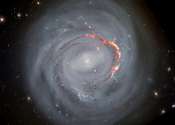CHESS mission will check out the space between stars
Deep in space between distant stars, space is not empty. Instead, there drifts vast clouds of neutral atoms and molecules, as well as charged plasma particles called the interstellar medium—that may, over millions of years, ...









